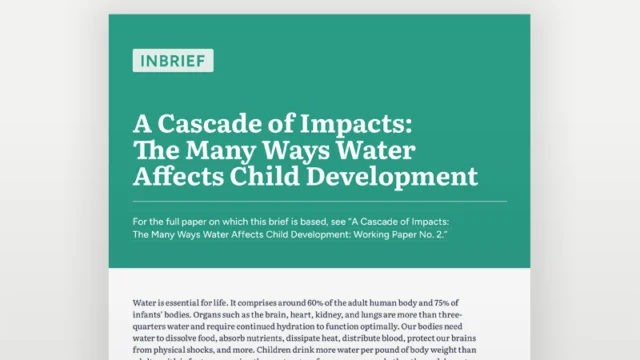InBrief | A Cascade of Impacts: The Many Ways Water Affects Child Development

Given the body’s near-constant need for water, its availability and quality are critical for child development and lifelong health. However, freshwater supplies are increasingly endangered due to extended droughts, large-scale farming of water-intensive crops in arid climates, overuse of local water sources, and toxic contamination.